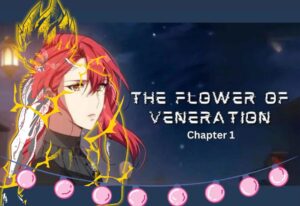
Ever wondered what it was like to be transported back in time through the power of music? Dadiyanki music, with its rich history and intricate melodies, offers a glimpse into the past. This ancient musical tradition, hailing from a region steeped in cultural heritage, is more than just music—it’s a way of life. Let’s dive deep into the world of Dadiyanki music and explore its rhythms and melodies that have stood the test of time.
Historical Background of Dadiyanki Music
Origin and Evolution
Dadiyanki music has roots that trace back centuries, evolving alongside the communities that nurtured it. Initially, it was an oral tradition passed down through generations, preserving stories, values, and customs through song. Over time, this music has adapted, integrating influences from neighboring cultures while maintaining its distinct identity.
Cultural Significance
The cultural significance of Dadiyanki music cannot be overstated. It served as a medium for storytelling, a tool for education, and a means of preserving history. Each melody and rhythm carries the essence of the community’s spirit, reflecting their joys, sorrows, and the everyday experiences that define their existence.
The Instruments of Dadiyanki Music
Traditional Instruments Used
The soul of Dadiyanki music lies in its unique instruments. Traditional instruments such as the Dadiyan (a stringed instrument), Nkari (percussion), and Yaluka (wind instrument) are integral to its sound. Each instrument adds a layer of depth and texture, creating a rich tapestry of auditory experiences.
Construction and Materials
These instruments are often handcrafted using locally sourced materials. The Dadiyan might be made from rare woods, while the Nkari uses animal hides for the drumheads. This use of natural materials not only ensures authenticity but also connects the music to the land it originates from.
Key Genres and Styles
Folk Music
Folk music is the heart of Dadiyanki traditions. These songs are often simple yet profound, telling tales of daily life, love, and nature. They are performed at community gatherings, festivals, and other social events, fostering a sense of unity and shared heritage.
Religious and Ceremonial Music
Religious and ceremonial music in the Dadiyanki tradition is deeply spiritual. These pieces are performed during rituals, ceremonies, and sacred events, invoking the divine and creating a bridge between the physical and spiritual realms.
Court Music
Historically, court music was performed for royalty and the elite. It is more elaborate and sophisticated, showcasing the virtuosity of the musicians and the richness of the tradition. This genre often includes complex compositions and is performed with great precision and elegance.
Famous Dadiyanki Composers and Musicians
Pioneers and Their Contributions
Several legendary composers and musicians have shaped Dadiyanki’s music. Figures like Jandoo Walla and Miri Kari are celebrated for their innovative compositions and contributions to the tradition. They pushed the boundaries of the genre, introducing new elements while preserving the essence of Dadiyanki music.
Notable Works
Among the notable works, compositions like “Song of the Ancestors” and “Echoes of the Mountains” stand out. These pieces encapsulate the beauty and complexity of Dadiyanki music, showcasing the intricate interplay of melody and rhythm that defines the genre.
Dadiyanki Music Theory
Scales and Modes
Dadiyanki music employs unique scales and modes that differ from Western musical traditions. The use of pentatonic scales and microtonal variations creates a sound that is both exotic and deeply resonant. These scales are the foundation upon which melodies are built, offering a distinct auditory experience.
Rhythmic Patterns
The rhythmic patterns in Dadiyanki music are equally unique. Polyrhythms and syncopation are common, adding a dynamic and complex layer to the music. These rhythms are often tied to the natural world, mimicking the sounds of nature and the rhythms of daily life.
Performance Practices
Traditional Performance Settings
Traditionally, Dadiyanki music is performed in communal settings. Whether in village squares, during festivals, or in sacred spaces, the music is meant to be a shared experience. These performances are often participatory, with the audience joining in through clapping, dancing, or singing along.
Modern Adaptations
In modern times, Dadiyanki music has found its way into concert halls and recording studios. Artists are experimenting with blending traditional sounds with contemporary genres, creating a fusion that appeals to a broader audience while keeping the tradition alive.
Dadiyanki Music in Modern Times
Revival Efforts
There has been a growing movement to revive and preserve Dadiyanki music. Cultural organizations, musicians, and scholars work together to document and promote this ancient tradition. Efforts include recordings, educational programs, and live performances to rekindle interest in Dadiyanki music.
Fusion with Contemporary Music
Fusion projects are bridging the gap between Dadiyanki music and contemporary genres. Collaborations with jazz, electronic music, and even hip-hop artists are introducing Dadiyanki rhythms and melodies to new audiences, ensuring its relevance in today’s musical landscape.
Cultural Impact and Legacy
Influence on Other Musical Traditions
Dadiyanki music has influenced various other musical traditions. Its unique scales, rhythms, and instruments have found their way into different genres, enriching global music culture. The cross-pollination of ideas has led to innovative musical expressions that celebrate cultural diversity.
Preservation Efforts
Preserving Dadiyanki music is crucial for maintaining cultural heritage. Efforts include archiving traditional songs, creating digital repositories, and supporting local musicians. These initiatives aim to keep the music alive for future generations to enjoy and learn from.
Learning and Teaching Dadiyanki Music
Educational Resources
There are numerous resources available for those interested in learning Dadiyanki music. Workshops, online courses, and instructional videos offer comprehensive guides on playing instruments, understanding music theory, and mastering performance techniques.
Importance of Mentorship
Mentorship plays a vital role in the transmission of Dadiyanki music. Experienced musicians often take on apprentices, passing down their knowledge and skills through direct, hands-on instruction. This traditional method ensures the continuity and authenticity of the music.
The Role of Dadiyanki Music in Society
Social Functions
Dadiyanki music serves various social functions, from marking important life events to fostering community bonds. It is an integral part of celebrations, ceremonies, and social gatherings, bringing people together and reinforcing shared cultural values.
Representation in Media and Popular Culture
The representation of Dadiyanki music in media and popular culture is growing. Documentaries, films, and music festivals are showcasing this rich tradition, introducing it to global audiences and highlighting its significance in the cultural tapestry.
Challenges Facing Dadiyanki Music Today
Threats of Modernization
Modernization poses significant threats to traditional Dadiyanki music. The allure of contemporary music and lifestyle changes are leading to a decline in interest among younger generations. This shift endangers the preservation of this ancient art form.
Loss of Traditional Knowledge
The gradual loss of traditional knowledge is another pressing issue. As older generations pass away, their invaluable knowledge of Dadiyanki music risks being lost. Preserving this knowledge through documentation and education is essential.
Preservation and Archival Efforts
Role of Museums and Cultural Institutions
Museums and cultural institutions play a crucial role in preserving Dadiyanki music. They collect and curate artifacts, recordings, and documents, creating a repository of cultural heritage that can be accessed by researchers and the public.
Digitization Projects
Digitization projects are making Dadiyanki music more accessible. By converting traditional recordings and manuscripts into digital formats, these projects ensure that the music can be preserved and shared widely, reaching a global audience.
Personal Stories and Anecdotes
Memories from Practitioners
Stories from practitioners offer a personal glimpse into the world of Dadiyanki music. Musicians often share anecdotes about their experiences, the challenges they face, and the joy they find in keeping the tradition alive. These narratives enrich our understanding of the music’s impact.
Anecdotes from Listeners
Listeners’ anecdotes provide insight into how Dadiyanki music touches lives. From memories of childhood festivals to moments of deep spiritual connection, these stories highlight the music’s power to evoke emotions and create lasting impressions.
Conclusion
Dadiyanki music is a testament to the enduring power of cultural traditions. Its rhythms and melodies offer a window into the past, connecting us to the experiences and emotions of those who came before us. As we continue to explore and preserve this rich musical heritage, we ensure that the legacy of Dadiyanki music lives on for future generations to appreciate and enjoy.
FAQs
What is Dadiyanki Music?
Dadiyanki music is an ancient musical tradition that originated in a culturally rich region, characterized by its unique rhythms, melodies, and traditional instruments.
Why is Dadiyanki Music Important?
Dadiyanki music is important because it preserves the cultural heritage, stories, and values of the communities that created it. It serves as a bridge between the past and present, fostering a sense of identity and continuity.
How Can I Learn Dadiyanki Music?
You can learn Dadiyanki music through workshops, online courses, and mentorship from experienced musicians. There are also educational resources available, including instructional videos and books.
What Are the Main Instruments Used in Dadiyanki Music?
The main instruments used in Dadiyanki music include the Dadiyan (a stringed instrument), Nkari (percussion), and Yaluka (wind instrument). Each instrument contributes to the unique sound of Dadiyanki music.
Where Can I Listen to Dadiyanki Music?
You can listen to Dadiyanki music at cultural festivals, concerts, and online platforms where recordings and performances are shared. Museums and cultural institutions may also have archival recordings available for public listening.



